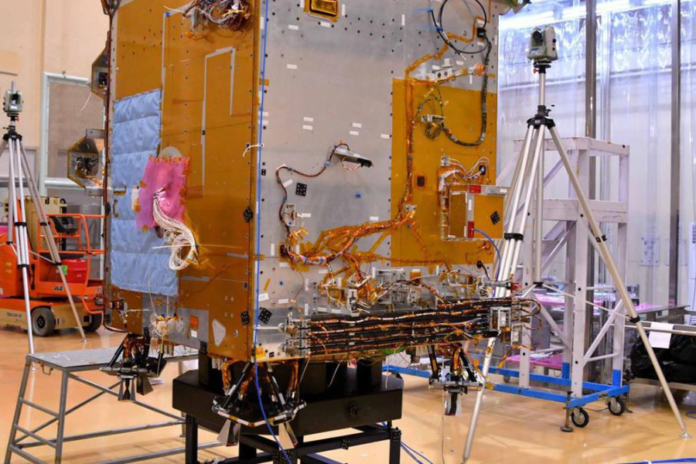The first space-based mission from India to study the Sun is about to launch. The Aditya-L1 satellite has arrived at the Satish Dhawan Space Centre-Sriharikota Range (SDSC-SHAR), Sriharikota, according to a post on X (formerly known as a “tweet”) by the Indian Space Research Organisation (ISRO) on Monday, August 14.
According to ISRO, the Aditya-L1 mission is nearing set to launch. The polar satellite launch vehicle (PSLV) will be used to launch the spacecraft on PSLV-C57, the upcoming mission of the workhorse rocket.
As hinted by ISRO Chairman S. Somanath shortly after the successful launch of the PSLV-C56 mission, which placed seven Singapore satellites in their intended orbit on Sunday (30 July), the launch is anticipated to occur either at the end of August or in the first part of September.
India’s solar spacecraft will be positioned in a halo orbit around the Sun-Earth system’s Lagrange point 1 (L1). About 1.5 million km separate this location from Earth.
Aditya-L1 will have the huge advantage of continuously studying the Sun without any occultation or eclipses thanks to the placement of the satellite in this orbit. This will make it possible to monitor solar activity and how it affects space weather in real-time.
The photosphere, chromosphere, and corona are just a few of the layers of the Sun that can be observed by Aditya-L1’s seven payloads. Along with particle and magnetic field detectors, these payloads will also use electromagnetic detectors.
From the unique vantage point L1, four of the spacecraft’s payloads will be able to see the Sun directly. The three additional payloads will perform in-situ particle and field experiments at L1, which will yield important scientific information on how solar dynamics spread throughout the interplanetary medium.
It is anticipated that the scientific equipment on Aditya-L1 will deliver essential data for comprehending a number of Sun-related phenomena, including coronal heating, coronal mass ejections, pre-flare and flare activity, dynamics of space weather, and the propagation of particles and fields.
At the U R Rao Satellite Centre (URSC), Bengaluru, the Aditya-L1 satellite was put together and integrated.



